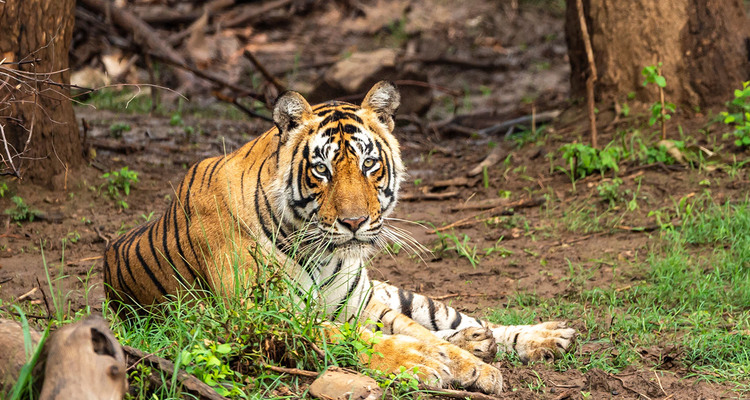
The Supreme Court has ruled against mining activities within a one-kilometer radius of critical tiger habitats (CTH), ordering a halt to such activities around the Sariska Tiger Reserve in Rajasthan. Justice BR Gavai, leading the bench, directed the Rajasthan government to devise a closure plan or take necessary actions to comply with the court’s orders. The matter is scheduled for further hearing in July.
The bench, including justices SVN Bhatti and Sandeep Mehta, emphasized that any mining within this radius violates the court’s previous order dated April 26, 2023, instructing Rajasthan to immediately cease mining activities within one kilometer of CTHs, specifically the Sariska tiger reserve.
In the ongoing TN Godavarman case, pending before the forest bench since 1995, an application was filed to halt mining activities within a one-kilometer radius of the Sariska tiger reserve in Alwar district. It was revealed in court that despite the April 26, 2023 decision prohibiting mining within one kilometer of national parks and wildlife sanctuaries, 110 mines were still operating in the area.
The Rajasthan government clarified that the mining ban, issued in April last year, only applied to the eco-sensitive zone surrounding national parks and wildlife sanctuaries, not tiger reserves. Additional Solicitor General Aishwarya Bhati, representing Rajasthan, emphasized that the critical tiger habitat (CTH) acts as a buffer zone for protecting the Sariska wildlife sanctuary and highlighted that only 60 of the 110 mines were operational within the one-kilometer radius.
However, the bench criticized the state’s stance as “contrary” to the law, citing Section 38XA of the Wildlife Protection Act. The bench emphasized that tiger reserves hold a higher status than wildlife sanctuaries and national parks, as interpreted in a recent judgment regarding tiger safaris in Jim Corbett Park. The court clarified that its April 26, 2023 order, which banned mining within one kilometer of protected areas, including critical tiger habitats (CTH), applies universally.
It noted that some mines in Sariska were as close as 50, 400, and 600 meters to the reserve’s boundary. Warning the Rajasthan government, the bench stated that if mining activities persist within the one-kilometer radius, it may extend its order to a ten-kilometer radius, as per a previous ruling in June 2022.
Parameshwar, amicus curiae in forest matters, opposed treating the tiger habitat as a buffer zone, citing Sariska’s tiger reserve status since 1978. He warned against permitting mining near the critical tiger habitat (CTH), designated for tourism, as it could harm the reserve’s ecosystem.
Bhati clarified that no mining occurs within the core tiger reserve (CTR), with nearby mines being small-scale. However, the court stressed conservation over mining, demanding cessation of operations within one kilometer.
In April 2023, the court, led by Justice Gavai, amended its June 2022 order, banning mining within one kilometer of national parks and wildlife sanctuaries.
This came after appeals from the Centre and states seeking changes to the previous ruling restricting mining and other non-forest activities within a 10-kilometer radius of protected areas.
Read More: Supreme Court, Delhi High Court, States High Court, Other Courts, International





